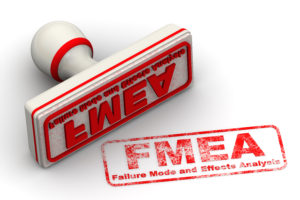How to Model Your Failure Mode and Effects Analysis (FMEA) With SysML
 I have noticed an increasing trend where more and more companies and government agencies are required by contract to perform Failure Modes Effects Analysis (FMEA). For example, the Food and Drug Administration (FDA) has mandated that FMEAs must be done for any product that is put out on the market. In general, every company that is producing any product should have a design and a FMEA. That same design should trace to requirements, define any hazards that may exist, and should be able to demonstrate the failure modes. Similarly, many original equipment manufacturers (OEMs) are following suit in requiring FMEAs in the production of parts and in the making of devices. For this reason, medical, aerospace, and automotive companies alike, all understand the need to generate FMEA tables and forms in order to prove acceptability in the marketplace. Traditionally FMEAs are captured in a spreadsheet format, either by tools like Windchill Quality Solutions, ReliaSoft’s Xfmea, or simply captured in Excel. Because my focus is modeling systems designs, I am in the process of developing a modeling technique which can enable systems engineers to easily access, create, trace, model the information they need. …
I have noticed an increasing trend where more and more companies and government agencies are required by contract to perform Failure Modes Effects Analysis (FMEA). For example, the Food and Drug Administration (FDA) has mandated that FMEAs must be done for any product that is put out on the market. In general, every company that is producing any product should have a design and a FMEA. That same design should trace to requirements, define any hazards that may exist, and should be able to demonstrate the failure modes. Similarly, many original equipment manufacturers (OEMs) are following suit in requiring FMEAs in the production of parts and in the making of devices. For this reason, medical, aerospace, and automotive companies alike, all understand the need to generate FMEA tables and forms in order to prove acceptability in the marketplace. Traditionally FMEAs are captured in a spreadsheet format, either by tools like Windchill Quality Solutions, ReliaSoft’s Xfmea, or simply captured in Excel. Because my focus is modeling systems designs, I am in the process of developing a modeling technique which can enable systems engineers to easily access, create, trace, model the information they need. …

